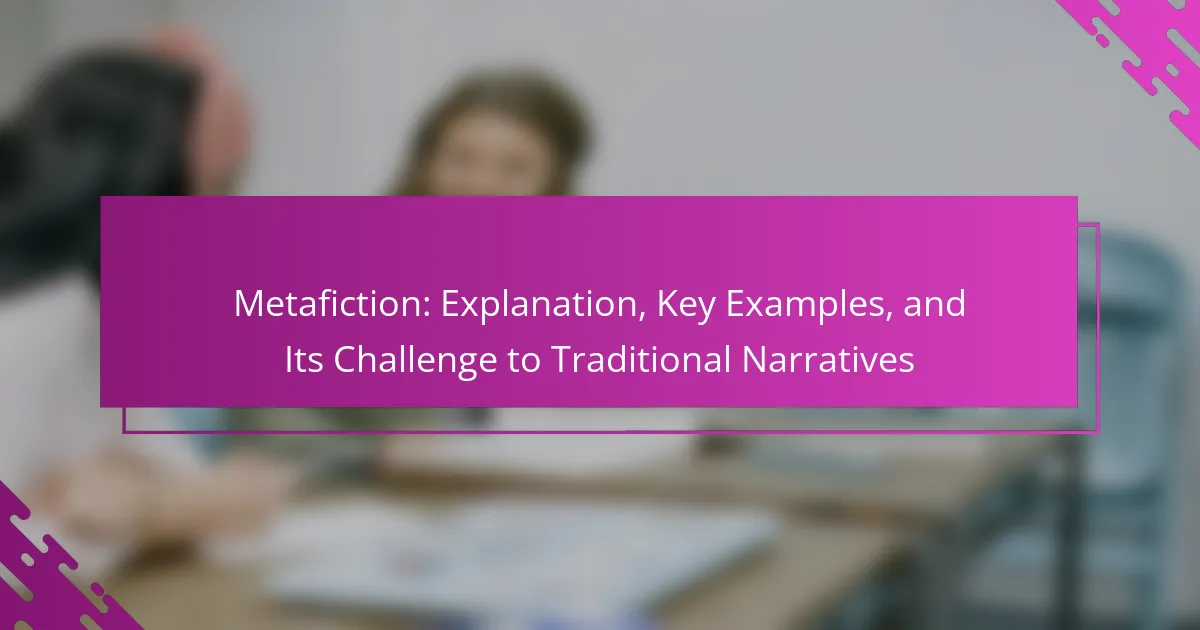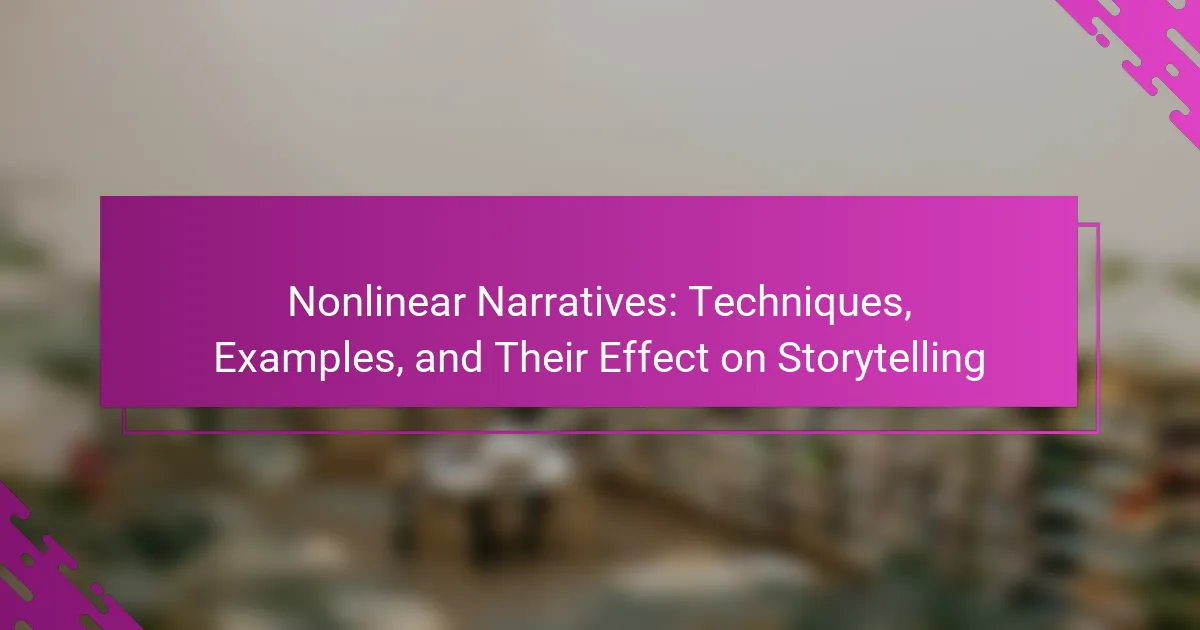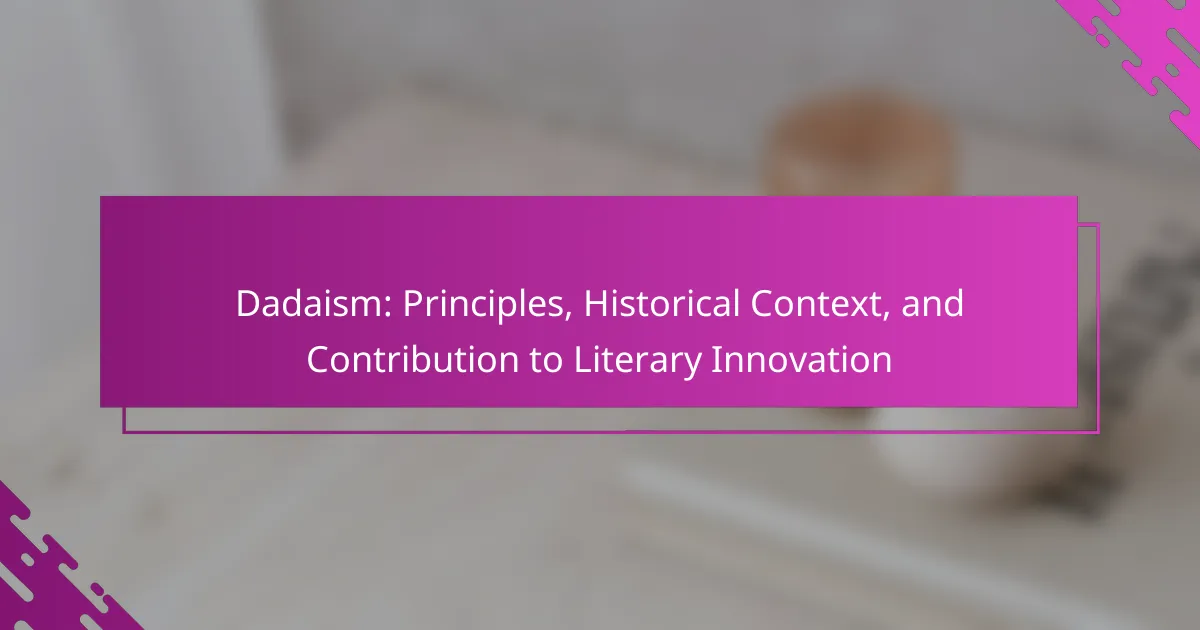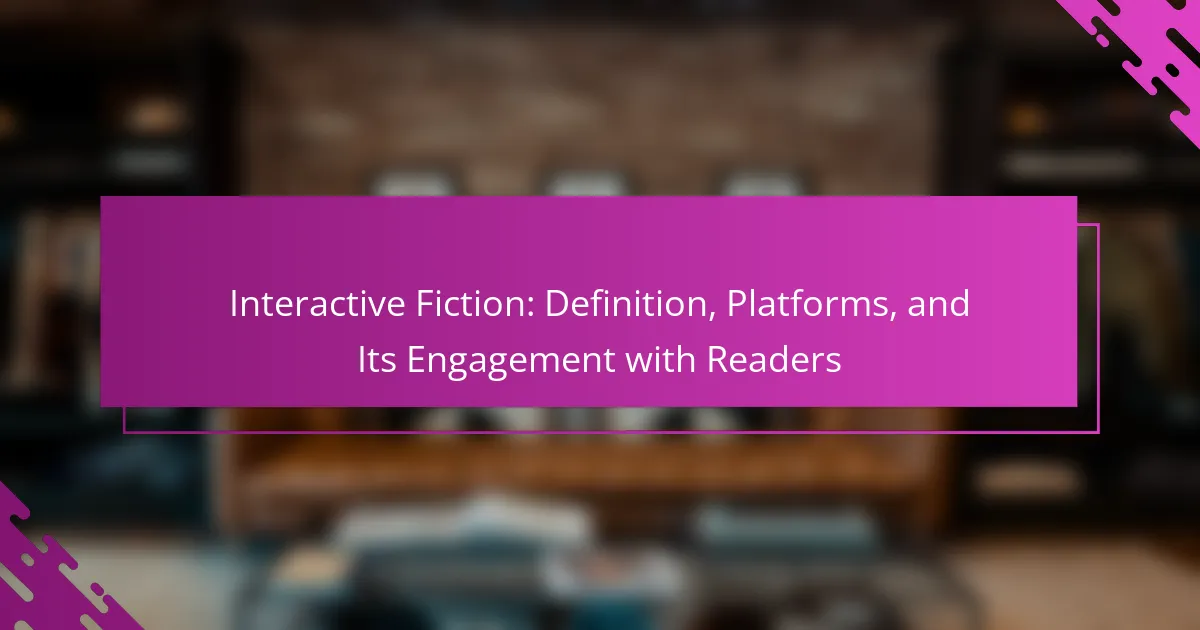Postmodernism challenges traditional narrative forms through skepticism, fragmentation, and intertextuality. Major authors like Thomas Pynchon and Don DeLillo exemplify these characteristics. Their works have reshaped narrative structures, introducing non-linear storytelling and blending genres. This article explores the defining features of postmodernism, highlights significant authors, and examines its impact on contemporary literature.
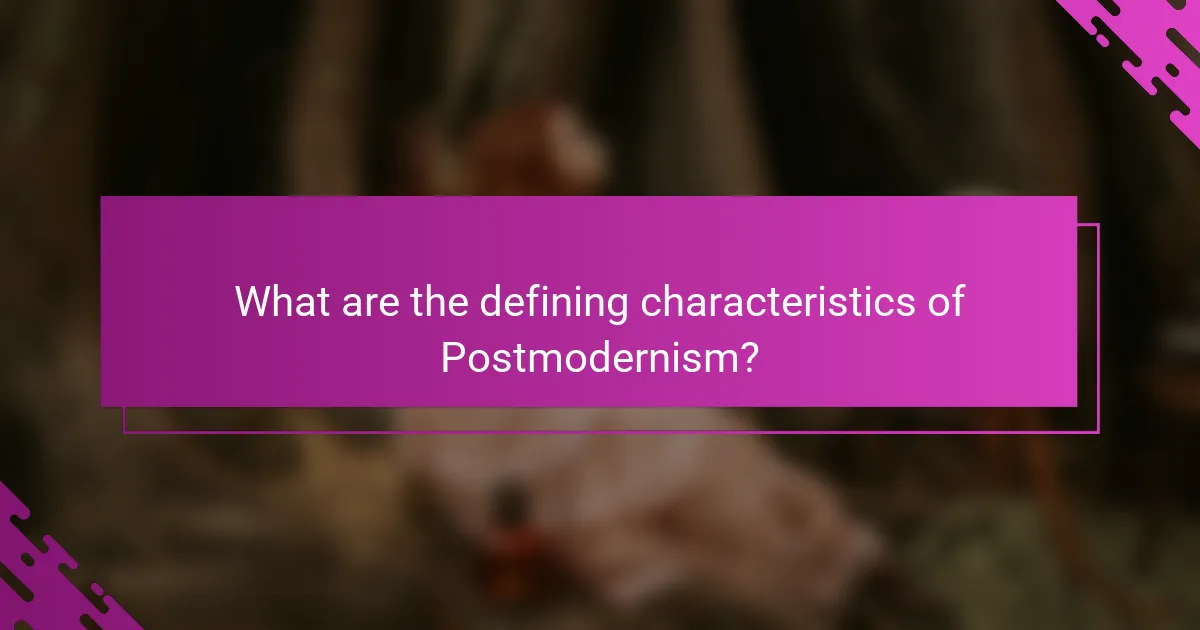
What are the defining characteristics of Postmodernism?
Postmodernism is characterized by skepticism towards grand narratives, fragmentation, and intertextuality. It challenges traditional forms and embraces irony, playfulness, and subjective realities. Major authors include Thomas Pynchon and Don DeLillo, whose works exemplify these traits. The impact on narrative forms includes non-linear storytelling and blending of genres, reshaping literature’s landscape.
How does Postmodernism challenge traditional narrative structures?
Postmodernism challenges traditional narrative structures by embracing fragmentation, non-linearity, and multiple perspectives. It disrupts the idea of a single, coherent storyline by incorporating metafiction and intertextuality, allowing for diverse interpretations. This approach reflects the complexities of contemporary experience, emphasizing subjectivity over objective truths. Major authors like Thomas Pynchon and Don DeLillo exemplify these techniques, showcasing how postmodern narratives can subvert expectations and engage readers in new ways.
What role does irony play in Postmodern literature?
Irony serves as a crucial tool in Postmodern literature, often highlighting contradictions and questioning established norms. It creates a sense of ambiguity, allowing authors to explore multiple perspectives. This technique reflects the fragmented nature of reality in Postmodern thought, engaging readers in a deeper analysis of meaning. Major authors like Thomas Pynchon and Don DeLillo employ irony to challenge traditional narrative forms, enhancing the complexity of their works. By using irony, Postmodern literature emphasizes the subjective nature of truth and reality.
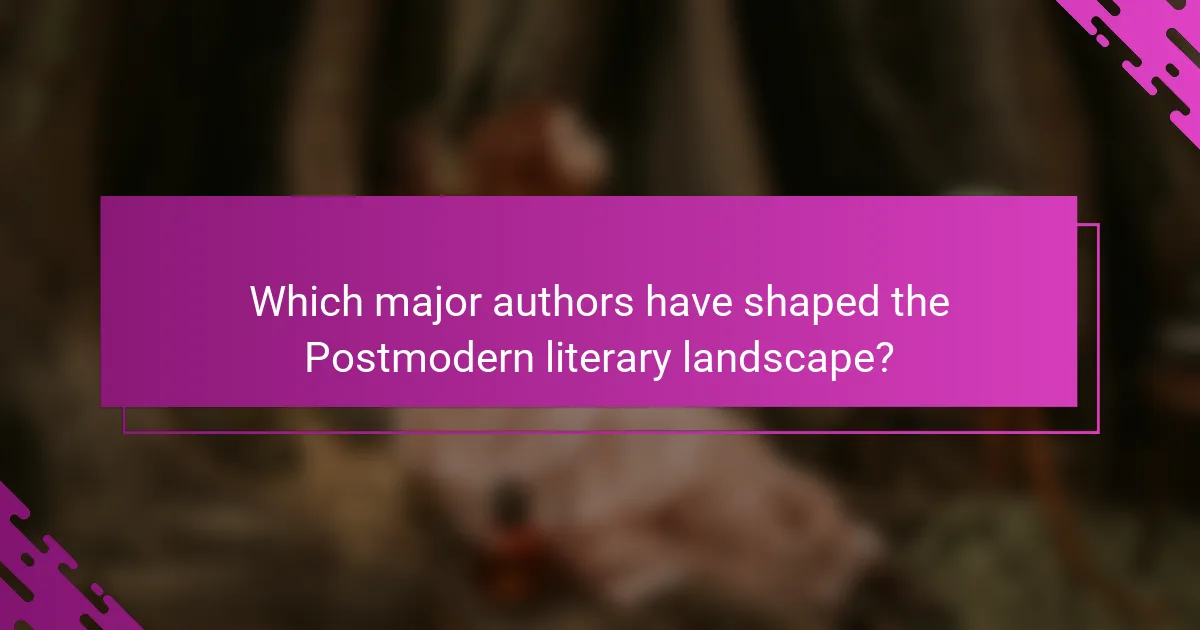
Which major authors have shaped the Postmodern literary landscape?
Postmodernism has been shaped by major authors including Thomas Pynchon, Don DeLillo, and David Foster Wallace. These writers challenged traditional narrative forms, incorporating metafiction, pastiche, and fragmented structures. Their works reflect the complexities of contemporary life and the questioning of objective truth. Pynchon’s “Gravity’s Rainbow” exemplifies dense, nonlinear storytelling. DeLillo’s “White Noise” explores media saturation and consumer culture. Wallace’s “Infinite Jest” merges humor with profound philosophical inquiries, illustrating the postmodern preoccupation with irony and self-reference.
What are the contributions of Thomas Pynchon to Postmodernism?
Thomas Pynchon’s contributions to Postmodernism include complex narratives, fragmented structures, and intertextuality. His works often challenge traditional storytelling techniques, emphasizing themes of paranoia and the impact of technology. Pynchon’s unique style blends historical events with fictional elements, creating a distinctive literary voice. His novels, such as “Gravity’s Rainbow,” exemplify the postmodern characteristic of blurring reality and fiction, influencing subsequent authors and narrative forms.
How does Don DeLillo’s work reflect Postmodern themes?
Don DeLillo’s work embodies Postmodern themes through fragmentation, metafiction, and the exploration of media saturation. His narratives often challenge traditional storytelling by blurring the lines between reality and representation. DeLillo’s characters frequently grapple with identity in a world inundated with information, reflecting a key Postmodern attribute. The unique attribute of his style lies in the blending of high and low culture, showcasing the absurdity of contemporary life. This approach has significantly impacted narrative forms, influencing how authors convey complex ideas in an increasingly mediated society.
What influence does Julio Cortázar have on Postmodern narrative forms?
Julio Cortázar significantly influences Postmodern narrative forms through his innovative use of non-linear storytelling and fragmented structures. His works challenge traditional narrative conventions, encouraging readers to engage actively with the text. Cortázar’s unique attribute lies in his ability to blend reality with fantasy, creating a surreal reading experience. This approach has inspired numerous authors in the Postmodern genre to experiment with time, perspective, and the relationship between the reader and the narrative. As a result, his impact on literature extends beyond his own writings, shaping the evolution of narrative techniques in contemporary fiction.
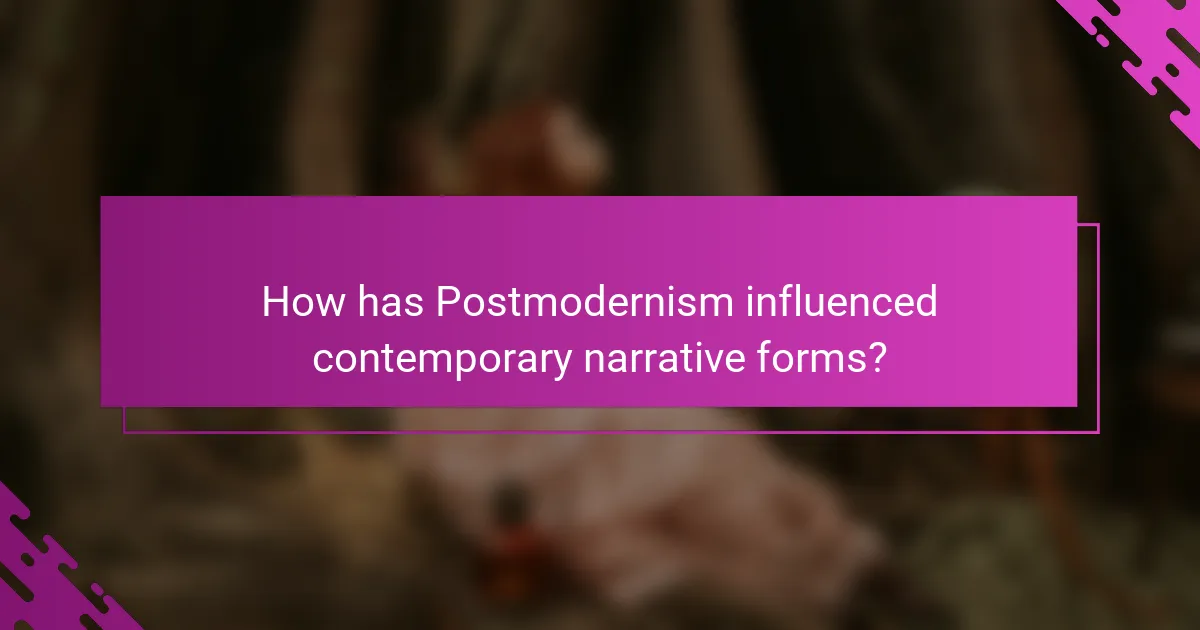
How has Postmodernism influenced contemporary narrative forms?
Postmodernism has significantly influenced contemporary narrative forms by promoting fragmentation, intertextuality, and metafiction. These elements challenge traditional storytelling methods, encouraging authors to experiment with structure and perspective. Major authors like Thomas Pynchon and Don DeLillo exemplify this impact through their complex narratives. As a result, contemporary literature often blurs the lines between fiction and reality, reflecting a diverse range of voices and styles.
What are the key narrative techniques associated with Postmodernism?
Postmodernism employs key narrative techniques such as fragmentation, metafiction, and unreliable narrators. These techniques challenge traditional storytelling by blurring boundaries between fiction and reality. Fragmentation disrupts linear narratives, creating a disjointed experience. Metafiction self-consciously addresses its own narrative structure, while unreliable narrators create ambiguity, forcing readers to question the truth. These attributes reflect postmodernism’s unique approach to exploring identity and reality.
How do Postmodern works incorporate metafiction?
Postmodern works incorporate metafiction by self-referentially exploring the nature of storytelling. This technique blurs the line between fiction and reality, prompting readers to question the authenticity of narratives. Authors like Thomas Pynchon and Don DeLillo use metafiction to highlight the constructed nature of their texts, often including commentary on their own writing processes. As a result, metafiction becomes a tool for critiquing traditional narrative forms and conventions, allowing for a more interactive experience for the reader.
What impact has Postmodernism had on genre blending in literature?
Postmodernism has significantly influenced genre blending in literature by breaking traditional boundaries and encouraging hybrid forms. This movement embraces pastiche, intertextuality, and metafiction, allowing authors to mix genres freely. Notable authors like Thomas Pynchon and Don DeLillo exemplify this trend through works that blend elements of science fiction, mystery, and historical narrative. As a result, literature has become more experimental, reflecting diverse perspectives and complex realities. This shift challenges readers to engage with texts in innovative ways, reshaping their understanding of narrative structure.
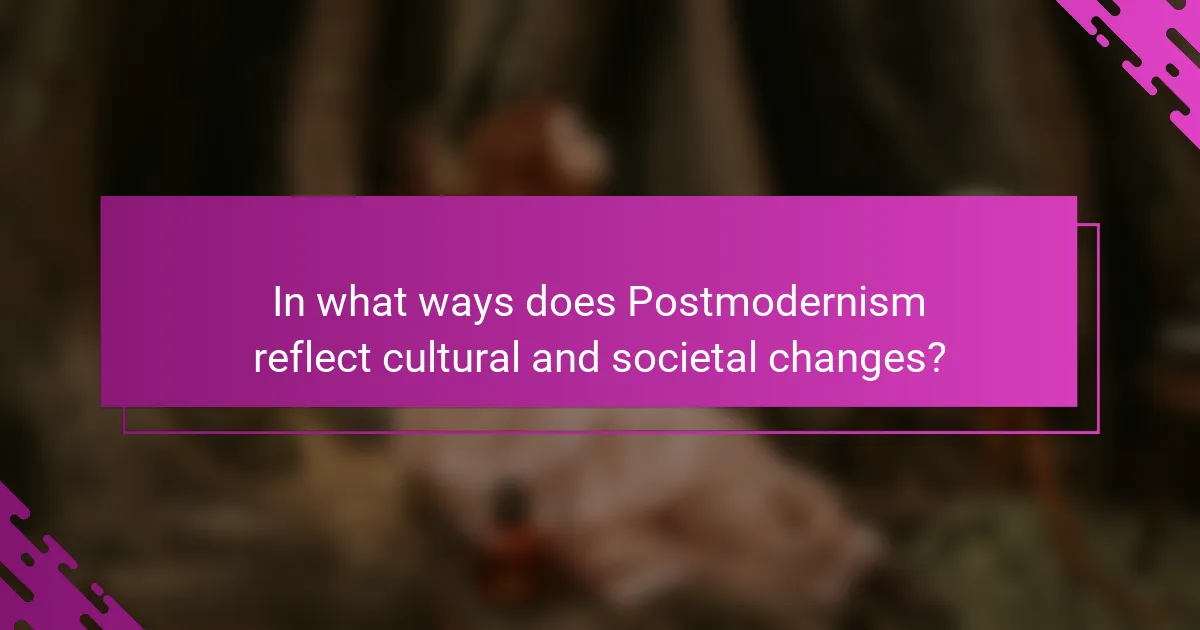
In what ways does Postmodernism reflect cultural and societal changes?
Postmodernism reflects cultural and societal changes through its embrace of fragmentation, irony, and skepticism. This movement emerged as a response to modernism and the perceived failures of grand narratives, highlighting the complexity of identity and reality. Major authors like Thomas Pynchon and Don DeLillo illustrate these themes in their works, which often challenge traditional narrative structures. As a result, postmodernism has significantly influenced contemporary literature, art, and philosophy, promoting a more pluralistic view of culture.
How does Postmodernism address issues of identity and fragmentation?
Postmodernism addresses issues of identity and fragmentation by emphasizing the fluidity of self and the multiplicity of perspectives. It challenges the notion of a singular, stable identity, reflecting the complexities of contemporary life. Major authors like Jean-François Lyotard and Michel Foucault explore how narratives shape individual and collective identities. Their works highlight how fragmentation is inherent in postmodern thought, as identities are constructed through cultural texts and social contexts. This approach reveals the interplay between power, language, and identity, showcasing a diverse array of experiences rather than a unified narrative.
What is the significance of globalization in Postmodern narratives?
Globalization significantly influences postmodern narratives by blending cultures and perspectives. This interconnectedness fosters diverse storytelling techniques and themes, reflecting a global consciousness. Major authors like Salman Rushdie and Thomas Pynchon illustrate how globalization shapes identity and challenges traditional narrative structures. As a result, postmodernism often embraces fragmentation and multiplicity, showcasing the complexity of contemporary life.
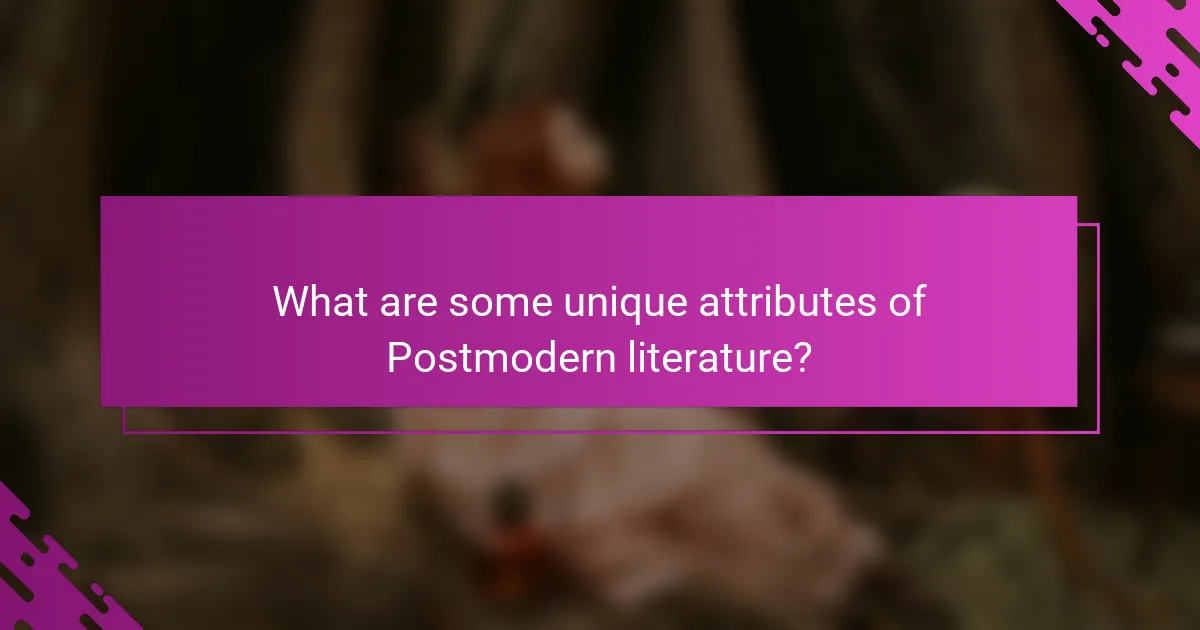
What are some unique attributes of Postmodern literature?
Postmodern literature is characterized by its unique attributes, such as metafiction, fragmentation, and intertextuality. Metafiction blurs the line between fiction and reality, often drawing attention to its own narrative structure. Fragmentation reflects the chaotic nature of contemporary life, presenting disjointed timelines and perspectives. Intertextuality references other texts, creating a network of meanings and encouraging reader engagement. These attributes challenge traditional narrative forms and invite diverse interpretations.
How does the use of pastiche distinguish Postmodern works?
Postmodern works often use pastiche to blend various styles, genres, and cultural references. This technique allows authors to challenge traditional narratives and create new meanings. Pastiche reflects the postmodern characteristic of intertextuality, where texts reference and build upon each other. By incorporating diverse influences, postmodernism blurs the boundaries between high and low culture, fostering a sense of playfulness and irony. This approach encourages readers to engage actively with the text, interpreting layered meanings and questioning established norms.
What is the role of intertextuality in Postmodern writing?
Intertextuality in Postmodern writing serves to blur boundaries between texts, creating layers of meaning. It emphasizes the interconnectedness of literature, where references, quotations, and allusions enrich narratives. This technique challenges traditional notions of authorship and originality, highlighting that texts are shaped by cultural contexts and prior works. Major authors like Thomas Pynchon and Don DeLillo exemplify this through complex narratives that invite readers to engage with multiple interpretations. The impact of intertextuality reshapes narrative forms, making them more reflective of a fragmented reality.
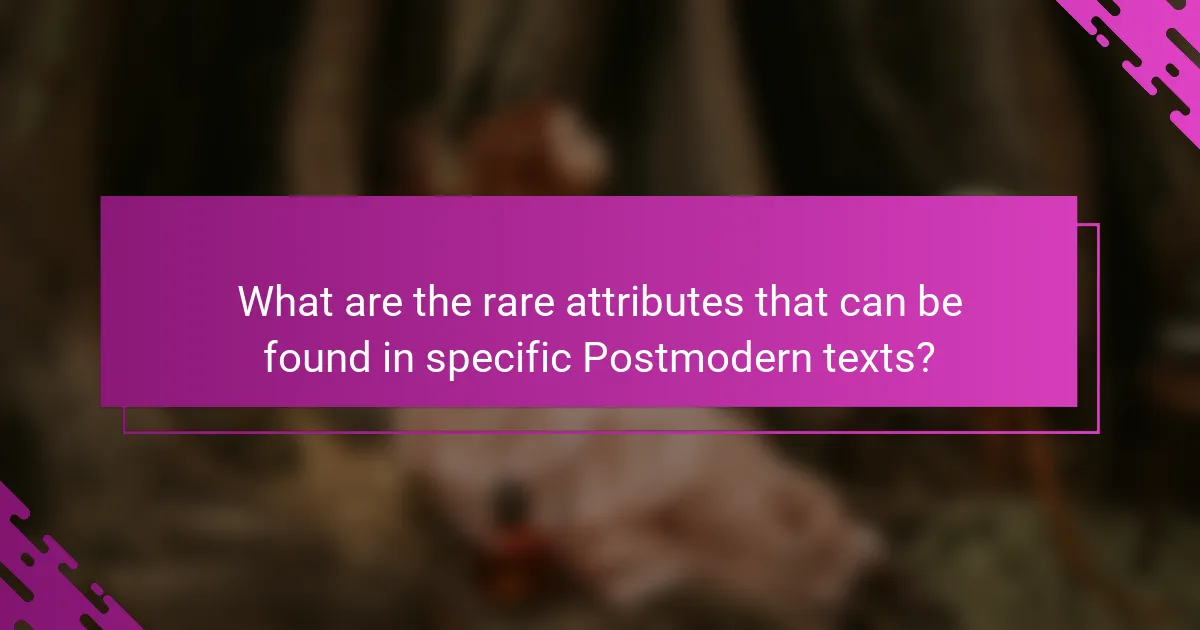
What are the rare attributes that can be found in specific Postmodern texts?
Rare attributes found in specific Postmodern texts include metafiction, fragmented narratives, pastiche, intertextuality, and unreliable narrators. These traits often challenge traditional storytelling methods and emphasize the subjective nature of reality. Metafiction blurs the line between fiction and reality, while fragmented narratives disrupt linear time. Pastiche combines various styles, and intertextuality references other texts, creating a complex web of meaning. Unreliable narrators question the truthfulness of the narrative, adding layers of ambiguity.
How does the nonlinear narrative structure appear in select Postmodern novels?
Nonlinear narrative structures in select Postmodern novels often disrupt traditional storytelling. Authors like Thomas Pynchon and Don DeLillo employ fragmented timelines and multiple perspectives. This approach reflects the complexity of reality and challenges linear causality. For instance, Pynchon’s “Gravity’s Rainbow” intertwines various plotlines, creating a web of connections that defies straightforward interpretation. Similarly, DeLillo’s “White Noise” shifts between different narrative voices, emphasizing the chaotic nature of modern life. These techniques exemplify how Postmodernism reshapes narrative forms, inviting readers to engage actively with the text.
What makes certain Postmodern works a commentary on technology and media?
Certain Postmodern works serve as a commentary on technology and media by critiquing their influence on society. These works often employ irony and pastiche to reflect the fragmented nature of contemporary life. Authors like Don DeLillo and David Foster Wallace highlight the overwhelming saturation of media and technology in daily experiences. Their narratives reveal how these elements shape identity and perception, often leading to alienation. This thematic exploration underscores the paradox of connectivity in a hyper-mediated world, making Postmodernism a vital lens for understanding modern existential concerns.
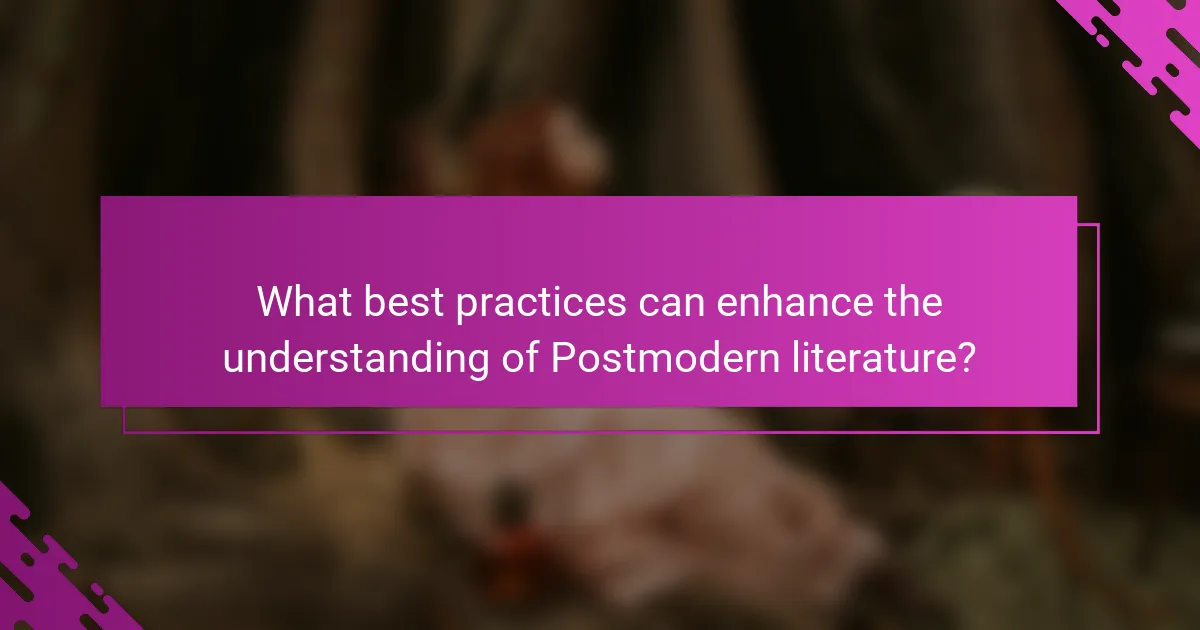
What best practices can enhance the understanding of Postmodern literature?
To enhance the understanding of Postmodern literature, focus on its key characteristics, diverse authors, and narrative impacts. Engaging with intertextuality, fragmentation, and metafiction deepens comprehension. Reading major works by authors like Thomas Pynchon, Don DeLillo, and Salman Rushdie illustrates these features. Participating in discussions and critiques fosters a richer insight into the complexities of Postmodern narratives. Exploring the cultural and historical contexts of the era enhances appreciation for its themes and techniques.
How can readers approach Postmodern texts for deeper analysis?
Readers can approach Postmodern texts by embracing ambiguity and intertextuality. Engage with multiple interpretations and challenge traditional narrative structures. Focus on the unique attributes of the text, such as metafiction and pastiche, to uncover deeper meanings. Analyze how these elements reflect cultural and historical contexts, enhancing your understanding of the narrative’s impact.
What common mistakes should be avoided when interpreting Postmodern narratives?
Avoiding common mistakes in interpreting postmodern narratives is crucial for accurate understanding. Key mistakes include oversimplifying complex themes, neglecting intertextuality, and misreading irony. Recognizing the fragmented structure and the role of the reader’s interpretation is essential. Additionally, failing to appreciate the blending of genres can lead to misconceptions about the narrative’s intent.
